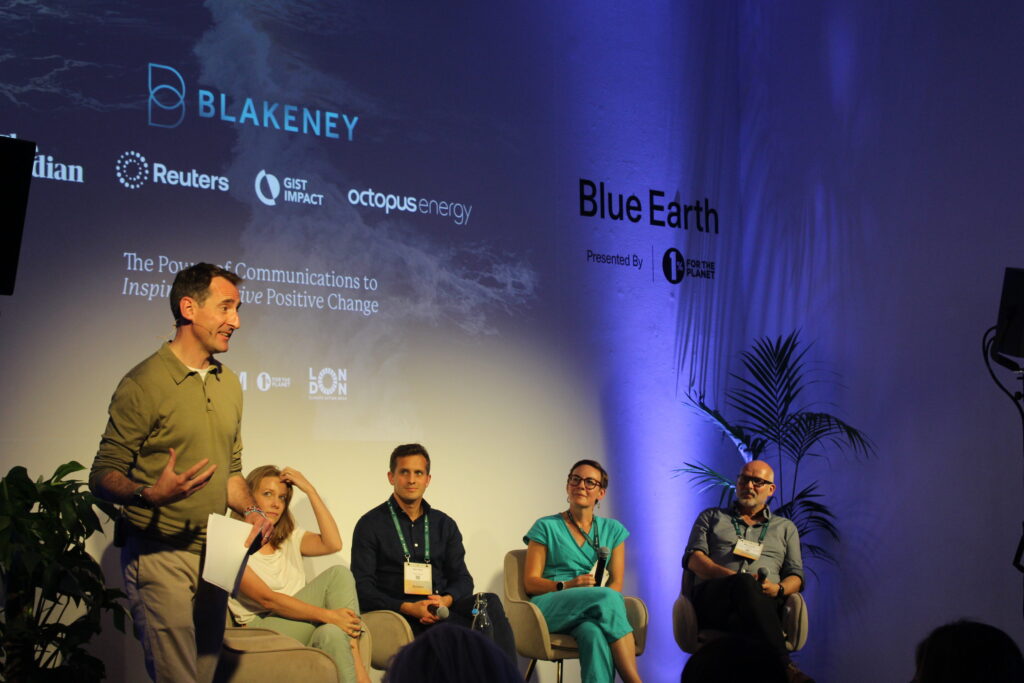
It’s no secret that climate change is one of the most complex challenges of our time.
But if you flip the script, here’s the good news: reaching net zero is also the biggest economic opportunity of the 21st century. The UK is leading this charge – renewables generated more than half of the country’s electricity in 2024, and groundbreaking innovations are making clean power more affordable and widespread every day.
To seize this moment, we need more than just technology – we need stories that inspire action. Compelling, persuasive communication will be a vital tool on the road to net zero. So how do we make it count?
At Blakeney, we believe great communications can change the world – and during London Climate Action Week we convened a panel of exceptional climate and media leaders to understand how communications can drive real and lasting climate action. The energy in the room was a brilliant reminder of when we get the message right, we can shift people from believing there is a problem, to taking action to solve it.
Here’s what we heard:
✅ Flip the script: move past negative headlines and celebrate positive stories.
✅ Cut the jargon: use language that resonates.
✅ Face the scepticism: understand their perspective.
✅ Bring people in: public support is strong, help people feel they’re part of the movement.
✅ Connect to daily life: show how action improves lives, not just the planet.
✅ Show the numbers: use data to underpin impact through compelling narratives.
✅ Humanise the cause: to get people to care, share human stories.
There was agreement in the room that the media tends to favour negative stories, and this often overshadows the reality of the situation. For example, 84% of the UK public support renewable energy, yet the media coverage overwhelmingly focuses on the challenges of and issues with the clean energy transition, instead of celebrating what’s working.
Inject hope and optimism into your communications, and paint a picture of what the future could look like should we choose to act on climate change now.
A good story always has a tension or conflict, so even when sharing positive news, be honest about the challenges on the road to success. Being open and transparent about overcoming problems will encourage others to share their lessons learned, accelerating the pace of climate action.
The climate space is rife with acronyms, buzzwords, and technical topics. For our message to resonate, we need our audience to understand what we’re saying, and then, believe in it.
Climate is often seen as overly complex or boring, so craft stories that will catch the attention of your audience (bonus points if you’re able to make the topic cool). Create content that is designed to trigger an emotional response from your audience, leading to “lightbulb moments” when an idea suddenly clicks and spurs action or support.
It’s natural to want to avoid climate conversations with sceptics or deniers, but for us to reach a net-zero future, we need to understand the ‘why’ behind these beliefs so we can change minds and reduce opposition. It may feel impossible at times, but it’s important that we engage with sceptics and use communications as a tool to address their concerns and hesitations.
Take time to identify shared values and concerns. For example, nature and public health can unify opposing groups. With this in mind, expand your message beyond climate and carbon benefits and incorporate stories of how your work is helping in other ways that your audience cares about, like protecting wildlife or improving air quality in the community.
Public support for decarbonisation is high, so it’s worth reminding your audiences that together, we can achieve a net-zero future. Weave testimonials and quotes into your communications and amplify the voices of supporters across your communications channels. Show your audience that there are people across all walks of life who support your mission.
Aim to expand messaging beyond climate and highlight how solutions unlock other benefits: from cleaner air and water, and healthier communities, to protecting biodiversity, climate action will improve life for generations to come. This holistic view will help win over sceptics and tip the scales in favour of climate action.
Designing communications that will speak to your audience’s emotions can be an effective tactic, but it’s critical that you back up emotion-centred stories with data and proof points to build credibility and mitigate scepticism. Include research and polling data that underscores the support for and effectiveness of climate solutions.
Putting human stories at the heart makes climate communications more relatable and drives public buy-in and support. Incorporate people-centred storytelling to show how the everyday lives of those who are being affected by changing weather patterns and how they’ll benefit from climate solutions.
Climate change can feel complex, complicated, and technical, but human stories can showcase how your company, product, or mission helps everyday people. But don’t stop there, make the connection to a greater story – how are you not only improving the lives of people, but also, contributing to solve issues at the global level?
Although London Climate Action Week has come to an end, this is only the beginning. Here at Blakeney, we’re determined to keep pushing for communications that are bold, human and hopeful, because that’s how we inspire change. The opportunity is enormous, and we can’t wait to keep working with partners, clients and communities to build momentum around the opportunity of climate action.